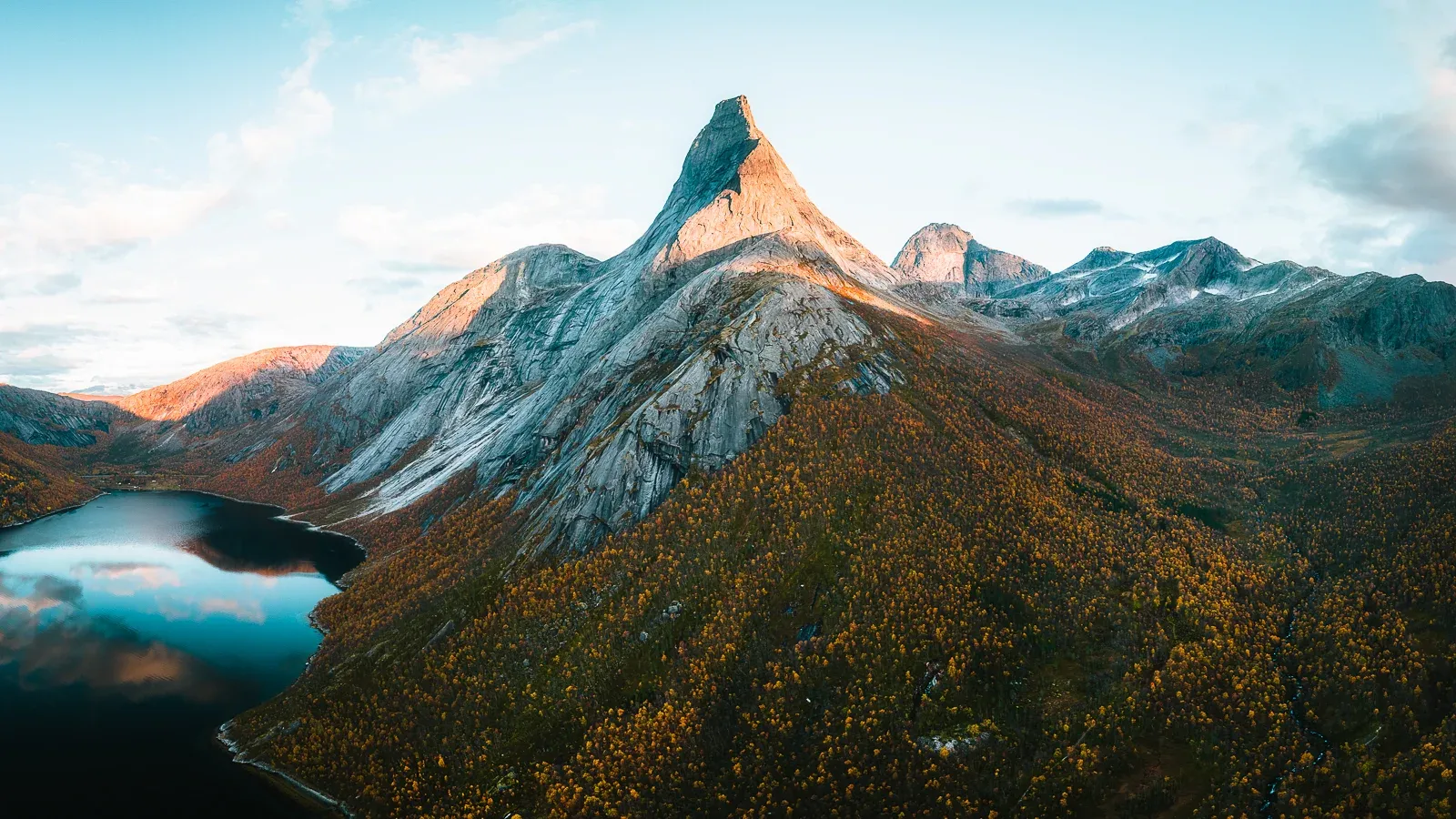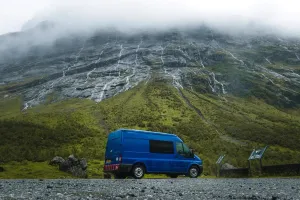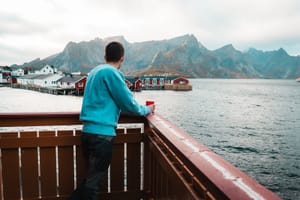Disclosure: This post may contain affiliate links, which means we may receive a commission if you click a link and purchase something that we have recommended. While clicking these links won't cost you anything, they will help us keep this site running and free for everyone.
Between September and October, the Lofoten Islands mountain peaks are framed by golden birch trees, the beaches are quiet and the fishing villages take on a slower pace of life.
It’s the start of the Northern Lights season, yet still mild enough to explore without the deep chill of winter. This shoulder season is often overlooked, but for those who crave dramatic scenery, cosy evenings and a taste of authentic Arctic Norway, autumn in Lofoten can be the perfect time to visit.
In this guide, we're sharing everything we learned during our time there. We'll answer the most common questions about the weather, daylight hours, costs, activities and the chances of seeing the Northern Lights - so you can decide if this season is right for your trip.
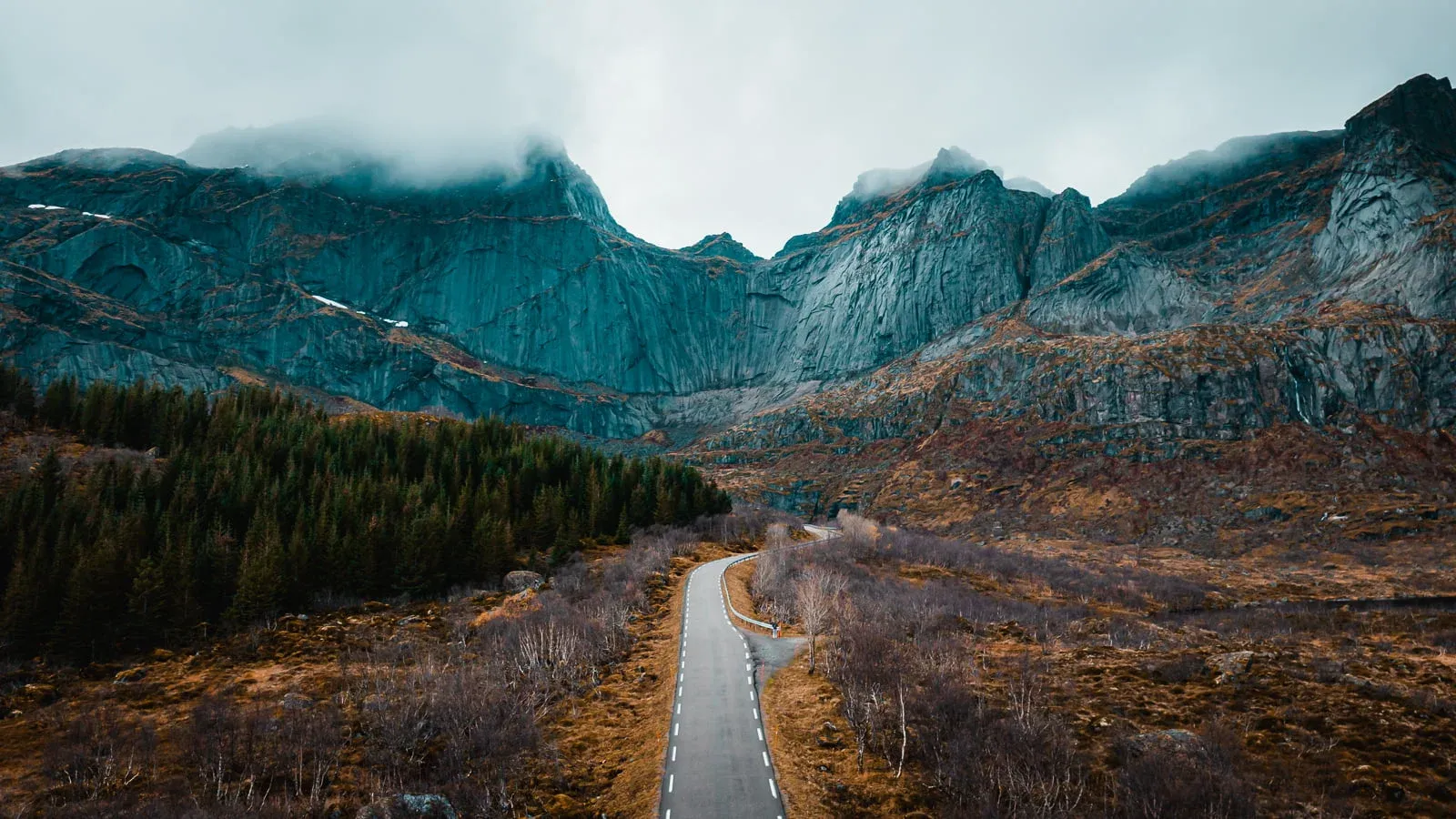
Pros of Visiting the Lofoten Islands in Autumn
There are plenty of advantages when visiting the Lofoten Islands during September or October, here are some of the reasons why it might be the perfect time for your trip:
- Fewer Tourists: After the busy summer months, September and October are much quieter. Roads, beaches and hiking trails are far quieter, meaning you can enjoy iconic spots like Reinebringen or Haukland Beach almost to yourself.
- Stunning Autumn Colours: The short Arctic autumn transforms the landscape into golden yellows and oranges. For Lofoten autumn photography, this season offers some of the best light and colours of the year.
- Start of the Northern Lights Season: From mid-September, nights are dark enough to see the aurora. While winter is the peak season, September and October do offer good chances - we saw the aurora once.
- Lower Prices: Travelling in the shoulder season means you can often find cheaper rates on cabins, hotels and car rentals compared to summer.
- Hiking and Outdoor Activities: Until late October, many of the popular trails remain open. Hiking in Lofoten in autumn means cooler temperatures and fewer crowds; you can also do kayaking, fishing trips or even surfing at Unstad Beach.
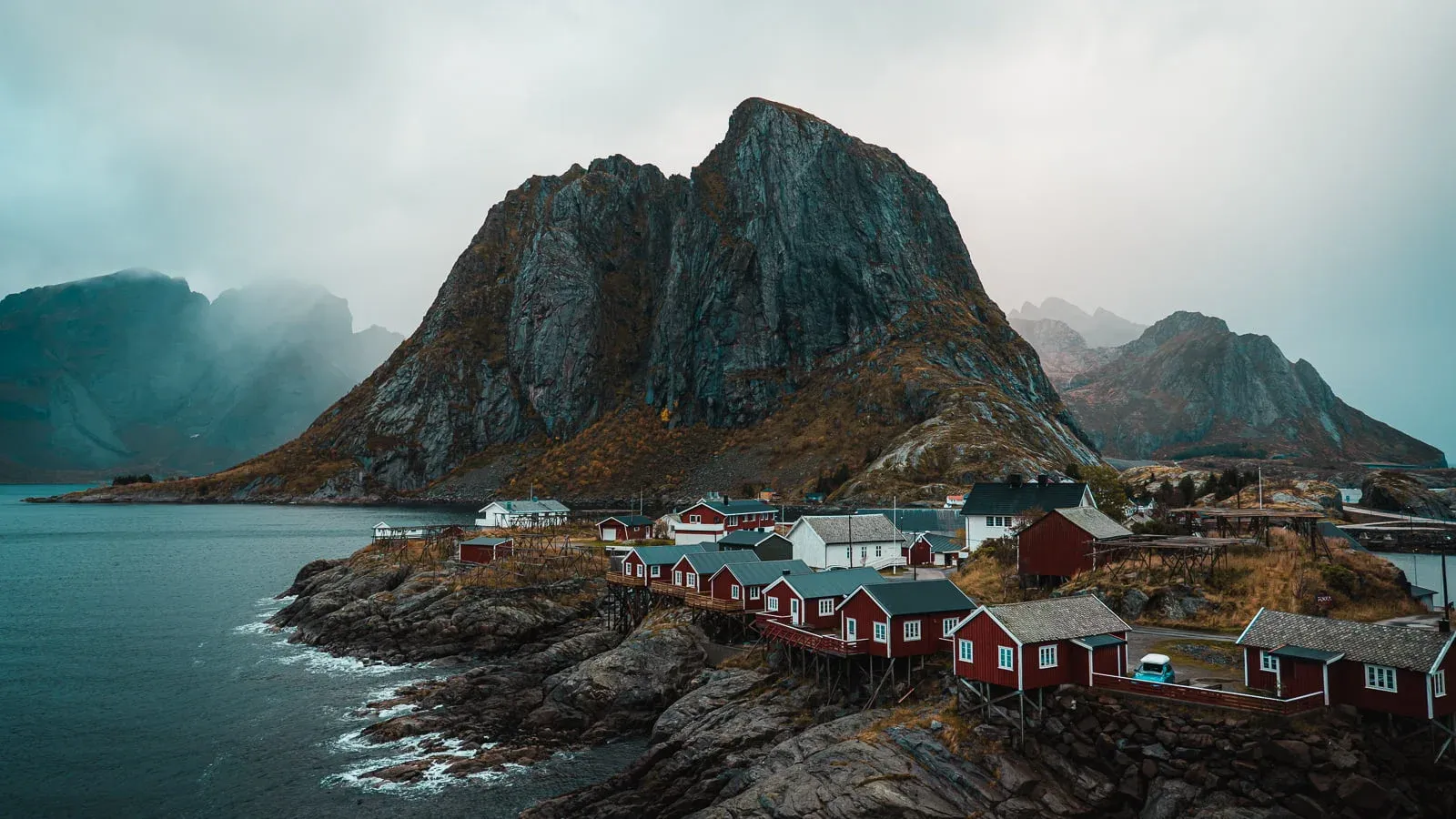
Cons of Visiting the Lofoten Islands in Autumn
While there are plenty of pros to visiting Lofoten in autumn, there are some drawbacks you should consider:
- Unpredictable Weather: The biggest drawback is the unpredictable weather. Storms can roll in quickly, bringing heavy rain and strong winds. We experienced a full week of stormy weather that we couldn't go out in!
- Shorter Daylight Hours: By late October, daylight drops to 7-8 hours a day, limiting time for long hikes or exploring. Unlike summer, there’s no midnight sun, so you’ll need to plan activities carefully around the light.
- Some Services and Tours Close: Certain restaurants, cafés and organised tours shut down after summer.
- Slippery Trails and Muddy Conditions: While hiking is still possible, trails can be wet, muddy or even icy in October. For safety, stick to well-marked routes and avoid steep mountain hikes in bad conditions.
- Fewer Transport Options: With fewer flights and ferries compared to summer, it may take longer to reach Lofoten and connections may not be as frequent.
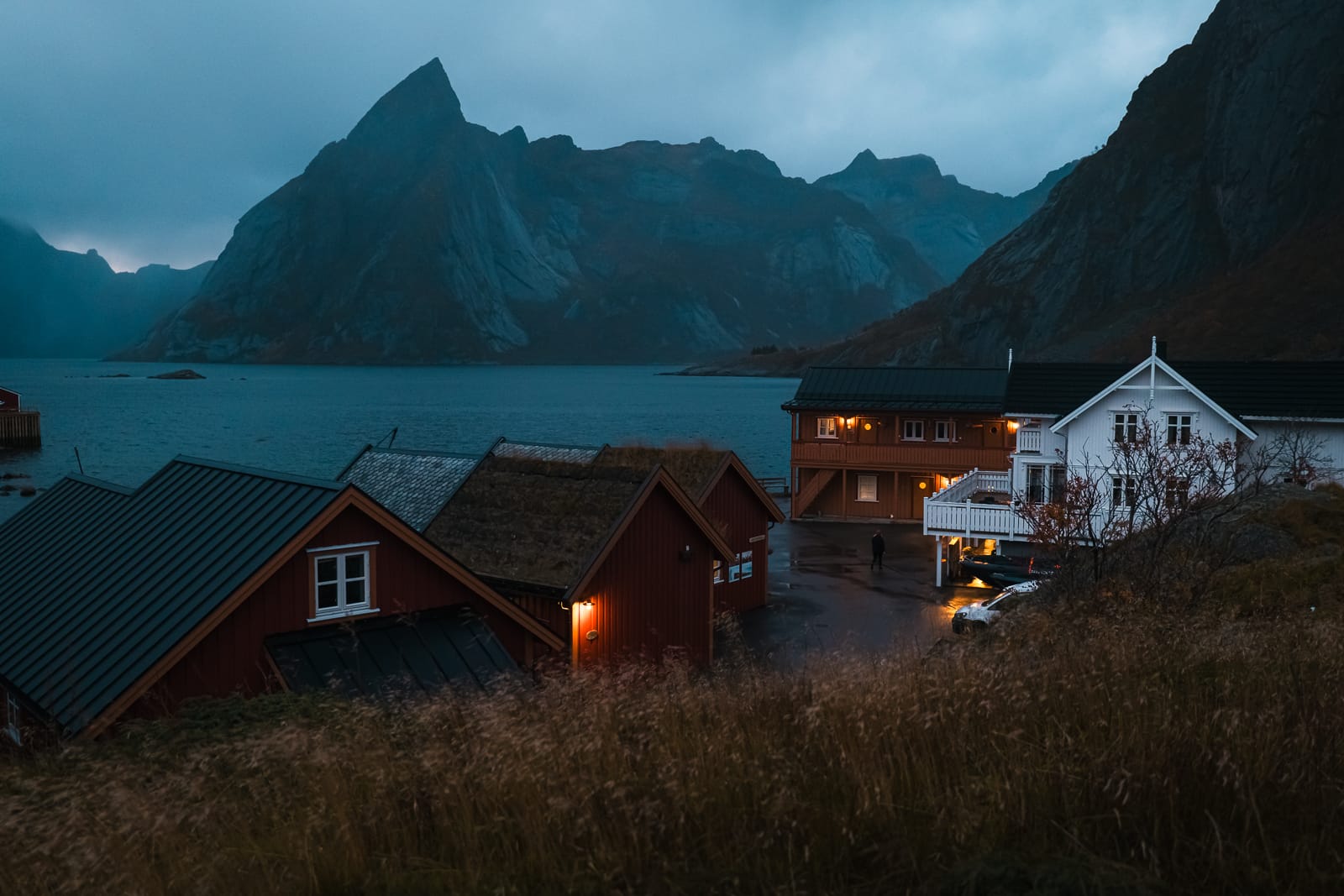
What’s the weather like in the Lofoten Islands in September and October?
The weather in Lofoten in September is fairly mild, with daytime temperatures around 7-12°C and evenings are chilly but not freezing.
We experienced a mix of sunny spells, light rain and coastal winds in September, which was perfect weather for hiking and exploring - as long as you have waterproof layers!
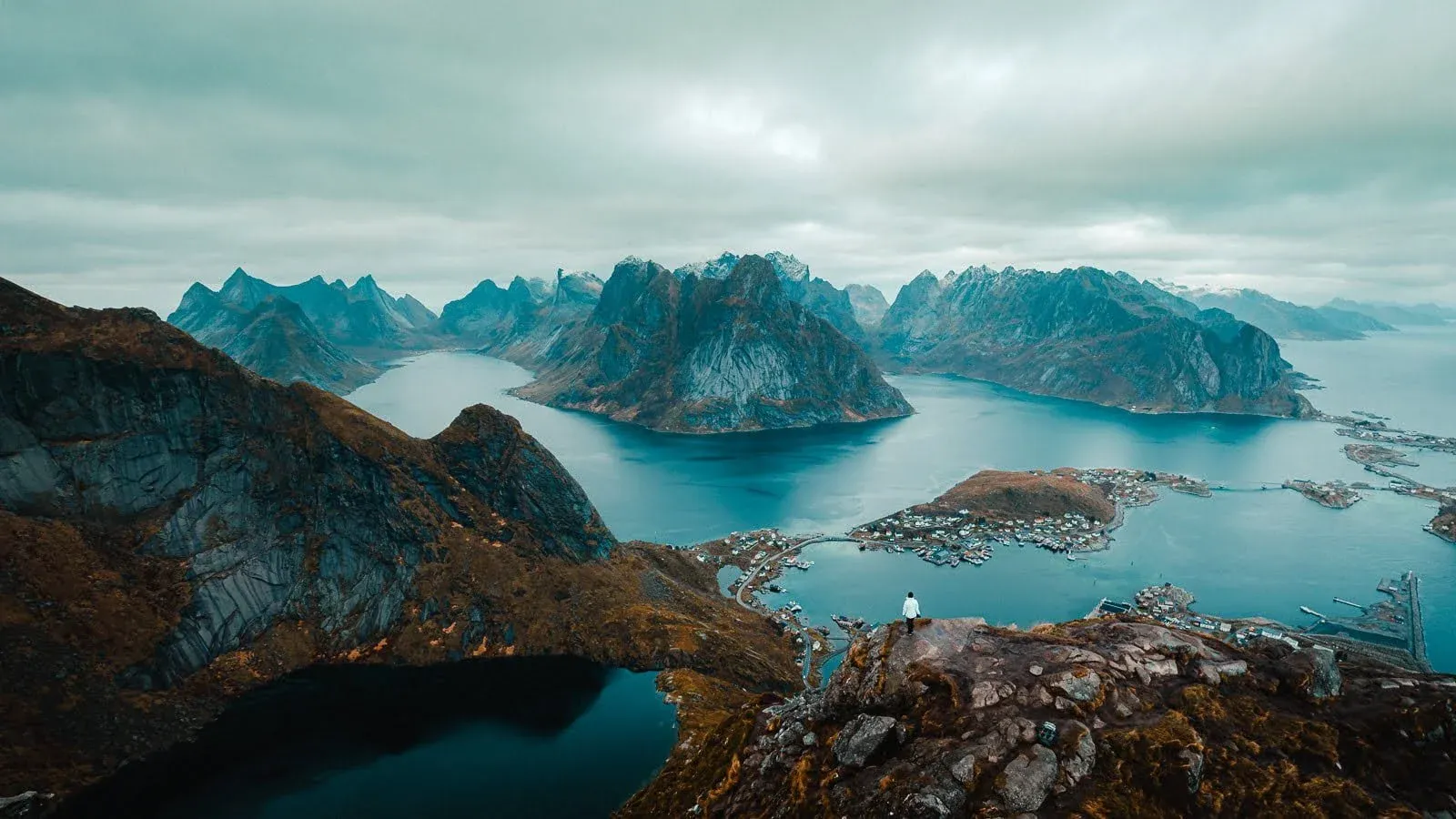
September is also the month when the islands are at their most colourful, with golden yellow and orange trees covering the valleys - perfect for autumn photography.
By October, the weather starts to shift, the average temperature drops to around 3-8°C and nights can dip close to freezing. Storms become much more frequent and the weather can change dramatically within a single day.
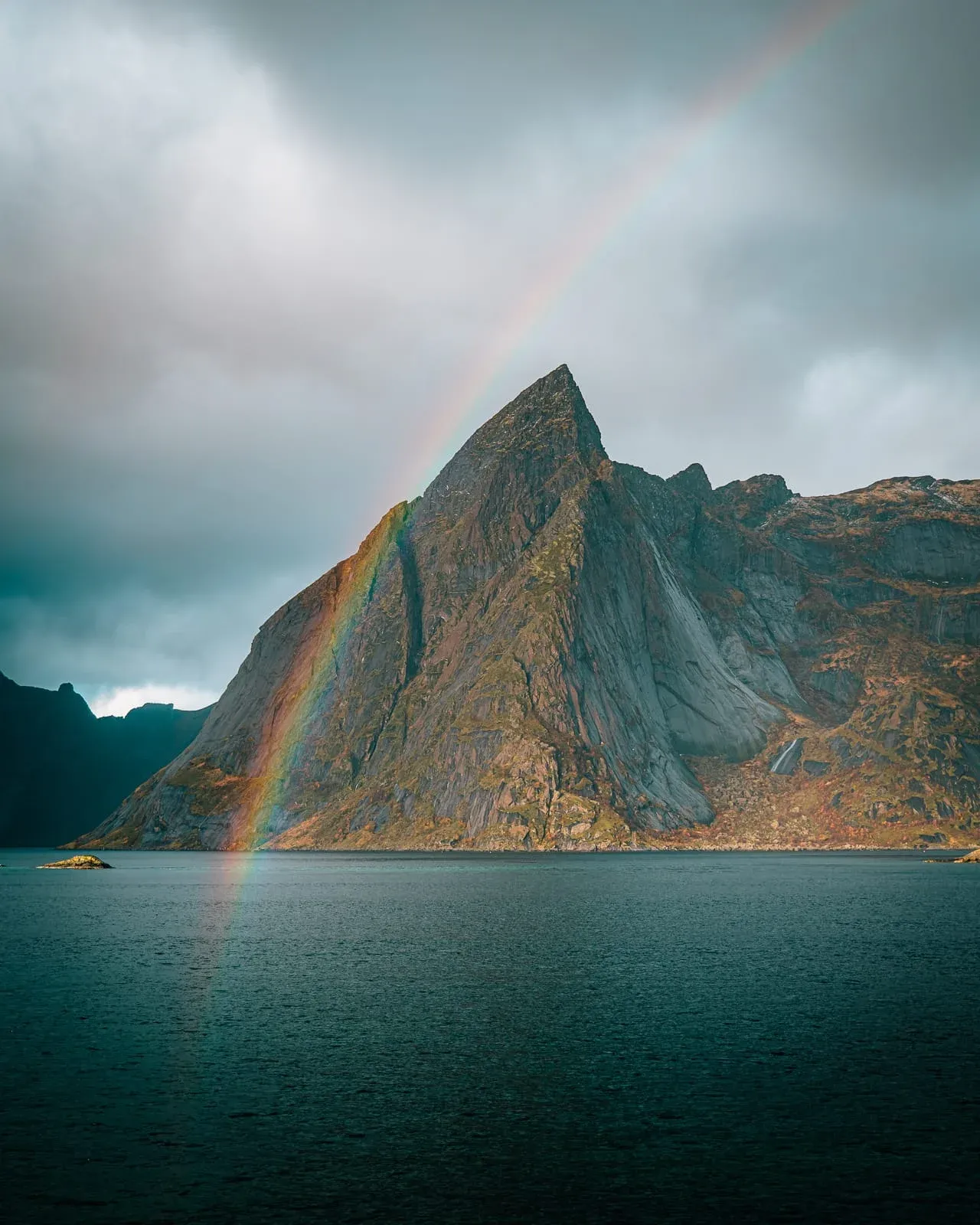
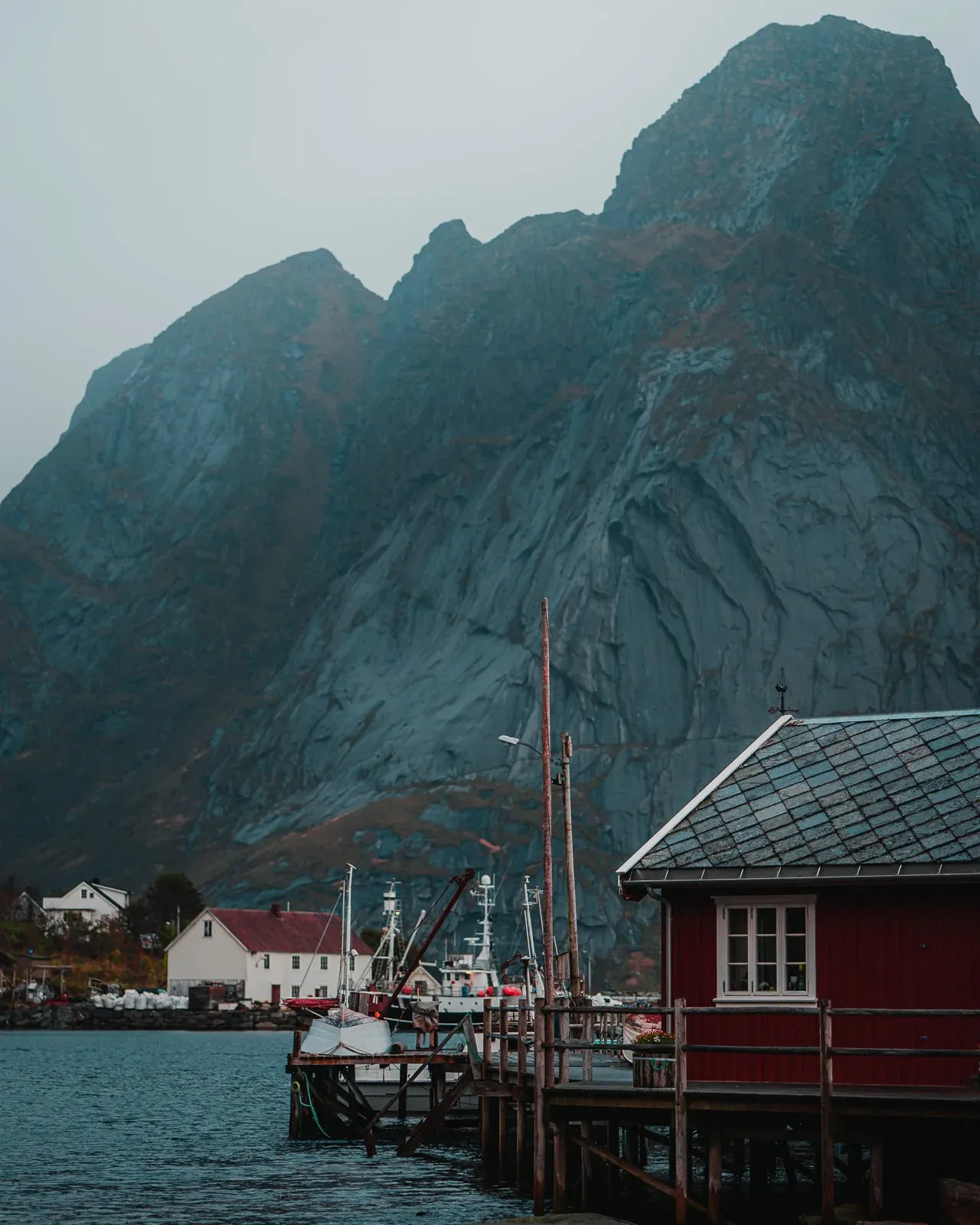
We experienced this firsthand, with a week-long storm during the first week of October that forced us to cancel several planned hikes and activities. Thankfully, the skies did clear after nearly a week, giving us a few precious moments of sunshine.
While you may not get as many dry, sunny hours as in September, the moody skies, dramatic light and raw coastal atmosphere make October especially rewarding for photographers and those who don’t mind wilder conditions.
Will there be snow in the Lofoten Islands in September or October?
Snow is quite rare in Lofoten during September and October, as it's just not cold enough to snow. By mid october there was a dusting of snow on the tallest mountains, and the mornings were becoming frosty.
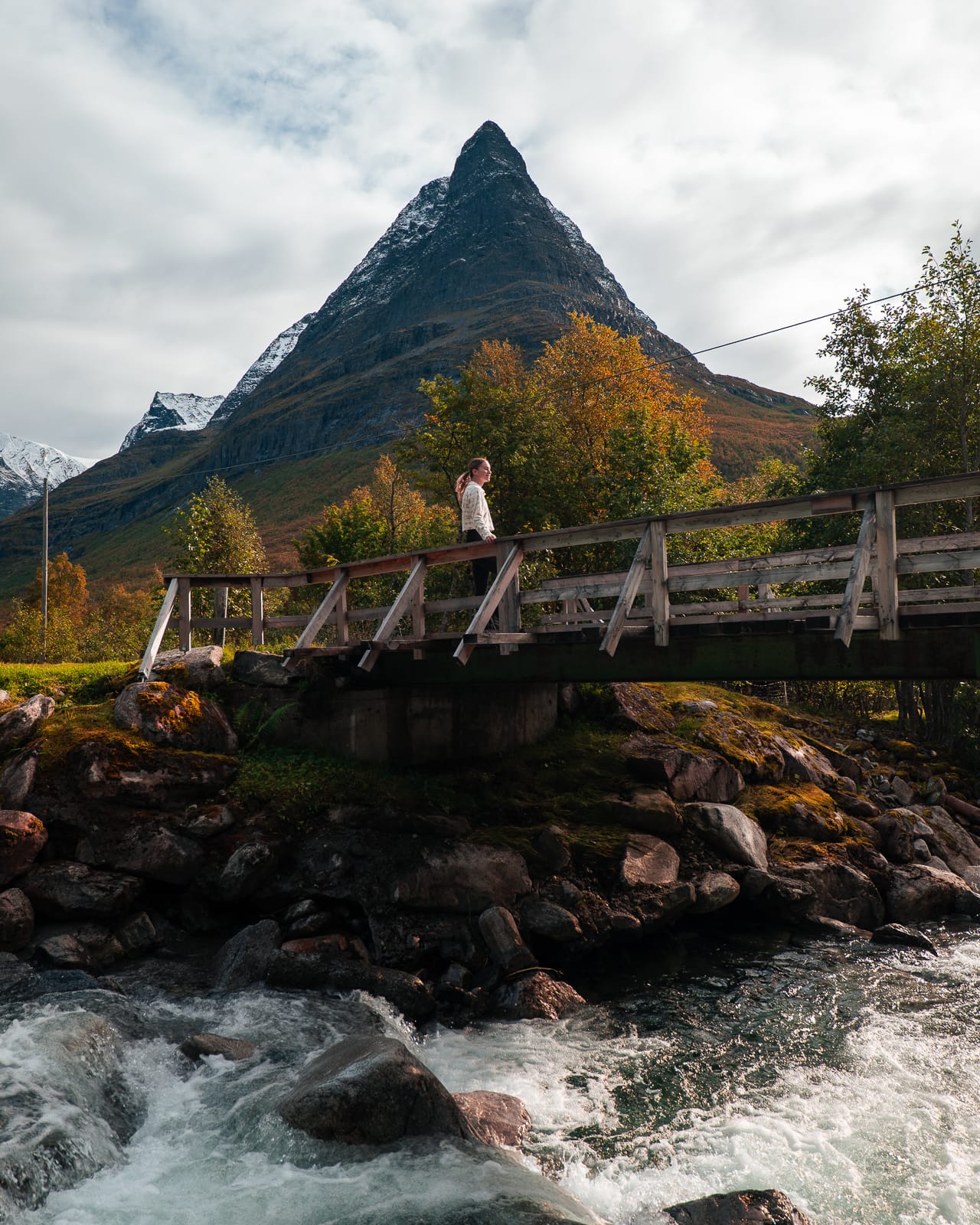
Rain is much more common than snow during these months, so if you're hoping to see Lofoten in a blanket of white, winter is a better time to visit.
How expensive is Lofoten in September and October?
Lofoten is never a budget destination, but visiting in autumn can be cheaper than the peak summer or winter months. In September, prices are already lower than July and August, though some lingering demand keeps them slightly higher than in October.
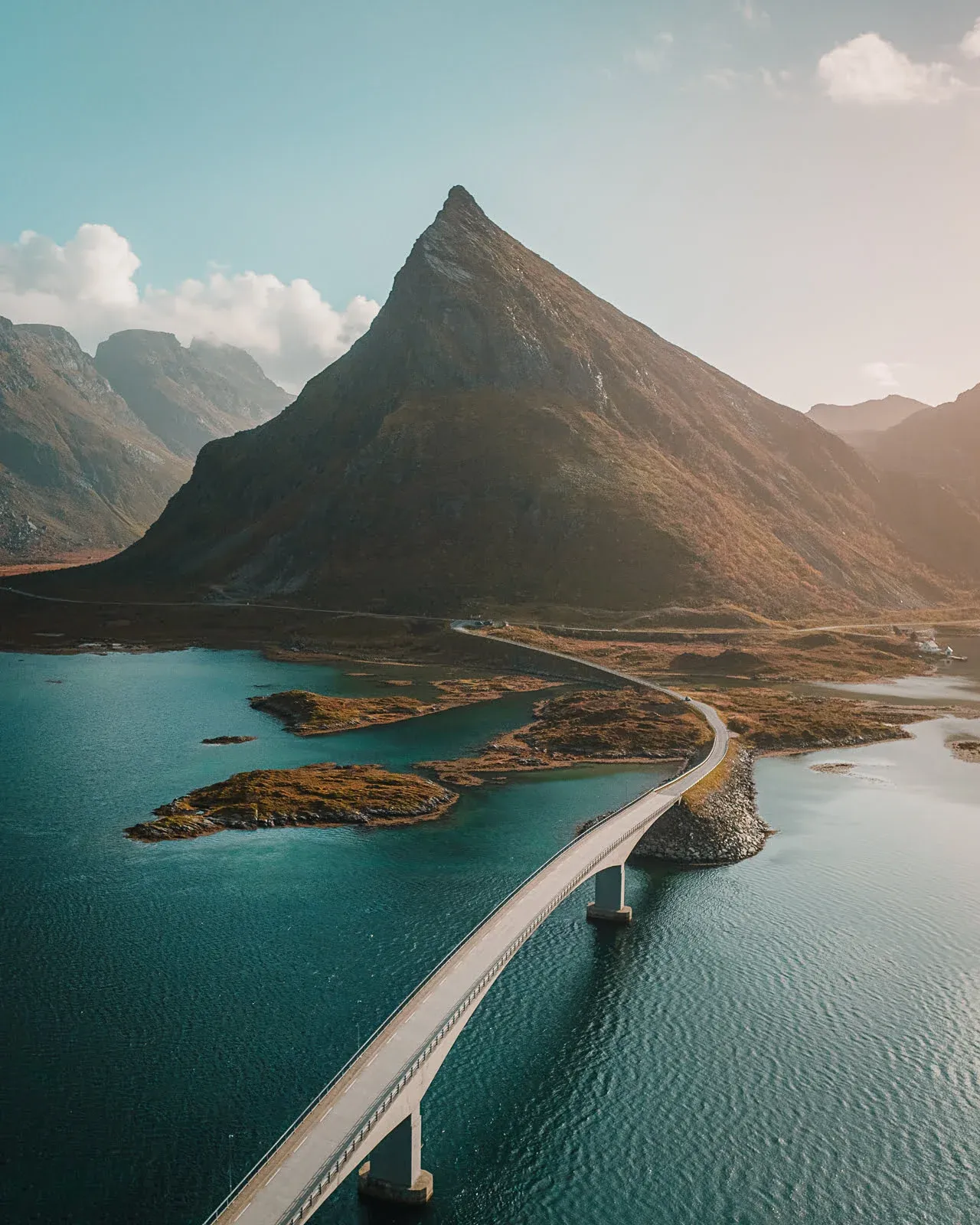
Expect to pay around £90-140 per night for a mid-range rorbu cabin or hotel, and car rentals are easier to find at a reasonable price compared to summer.
By October, tourism slows down even further, making it one of the cheapest times to visit the islands. Accommodation prices often drop by 20-40% compared to peak season and you’ll have more flexibility with booking last-minute.
Food, fuel and groceries cost the same year-round, but autumn is the best season to get deals on your biggest travel expenses: where you stay and how you get around.
Can you see the Northern Lights in Lofoten in September and October?
Yes, both September and October offer the chance to see the Northern Lights in Lofoten. From mid-September, the nights are dark enough for aurora hunting and the equinox period around late September is often associated with higher solar activity.
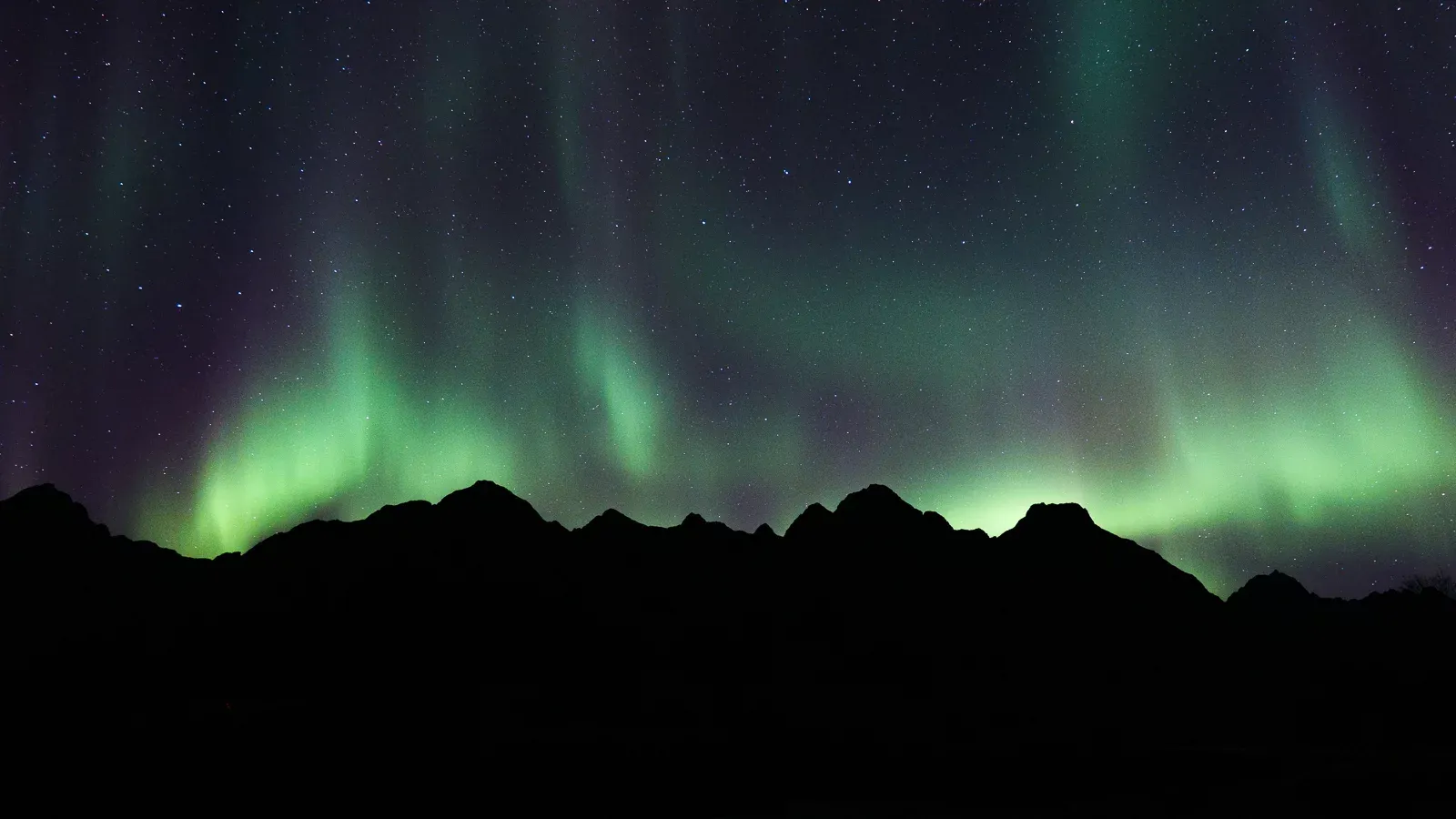
It's still relatively mild in the evenings compared to the deep winter months, which makes standing outside watching the sky more comfortable.
By October, the nights are much longer, giving you even more hours of darkness to spot the aurora. On clear nights, your chances of seeing the Northern Lights are high, especially if you head away from village lights.
We only managed to spot the aurora once during our trip, but the first week was cloudy, stormy weather. On top of that, the Northern Lights often appear in the middle of the night, making them easy to miss if you're not looking for them.
How much daylight can you expect in Lofoten in September and October?
Daylight changes dramatically in Lofoten during autumn and it’s one of the biggest factors to consider when planning your trip. In early September, you can expect long days with around 14-15 hours of daylight.
By late September, this drops closer to 11-12 hours, giving you plenty of time for hikes and road trips while still offering dark nights for Northern Lights viewing.
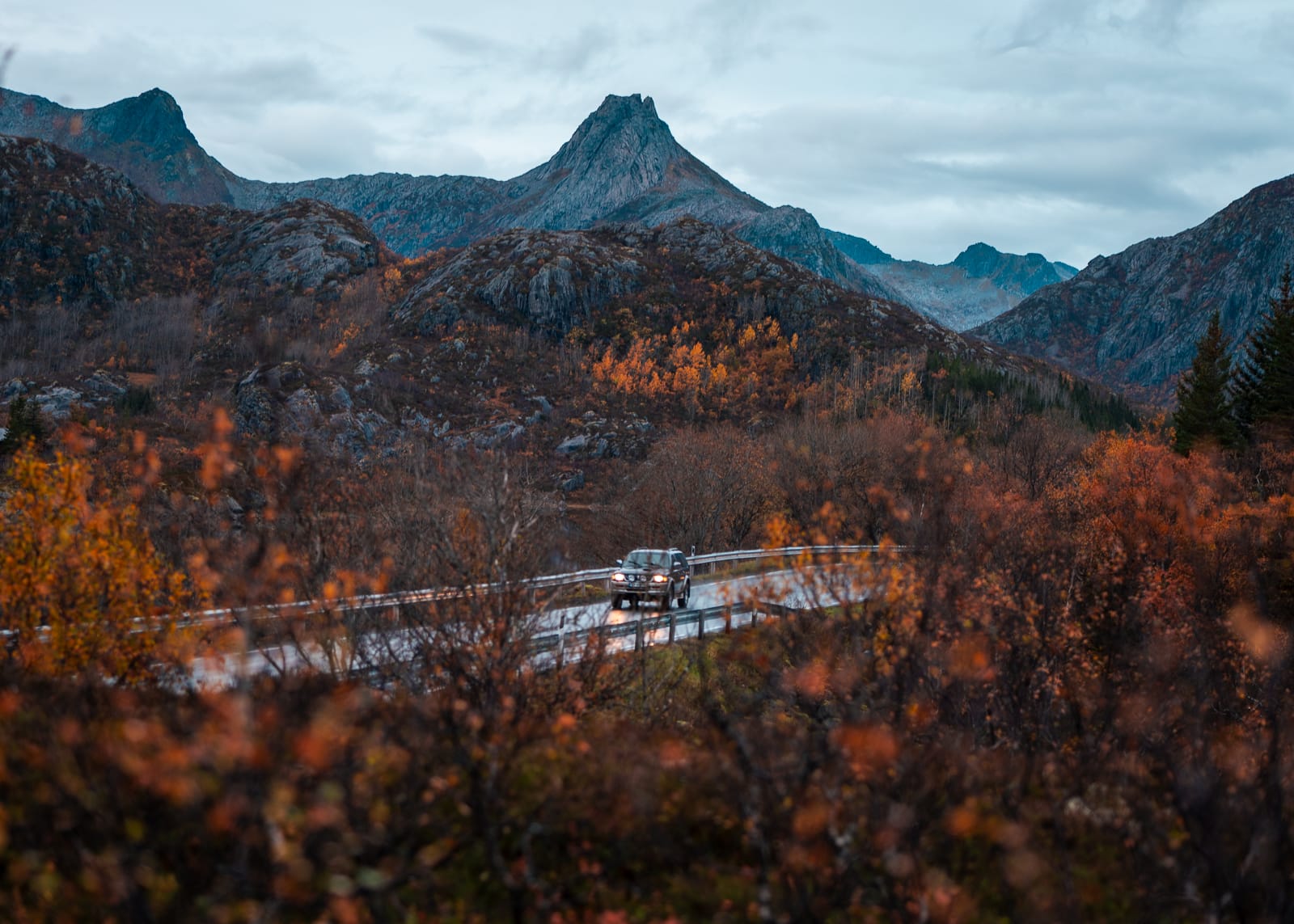
October, however, brings a much faster transition. At the start of the month, you’ll still have about 10-11 hours of daylight, but by the end of October, this shrinks to around 7-8 hours.
The shorter days mean you’ll need to plan your activities more carefully, especially outdoor adventures like hiking or kayaking. On the plus side, the long evenings create perfect conditions for cosying up in a cabin and watching for the aurora.
What activities can you do in Lofoten in September and October?
There are plenty of activities to experience in the Lofoten Islands during autumn, even if the weather is often dramatic and unpredictable.
1. Hiking
September is the best autumn month for trails like Reinebringen, Ryten and Mannen, which are usually snow-free and framed by golden autumn colours. In October, lower hikes are still possible, but higher peaks may already see the first snow.
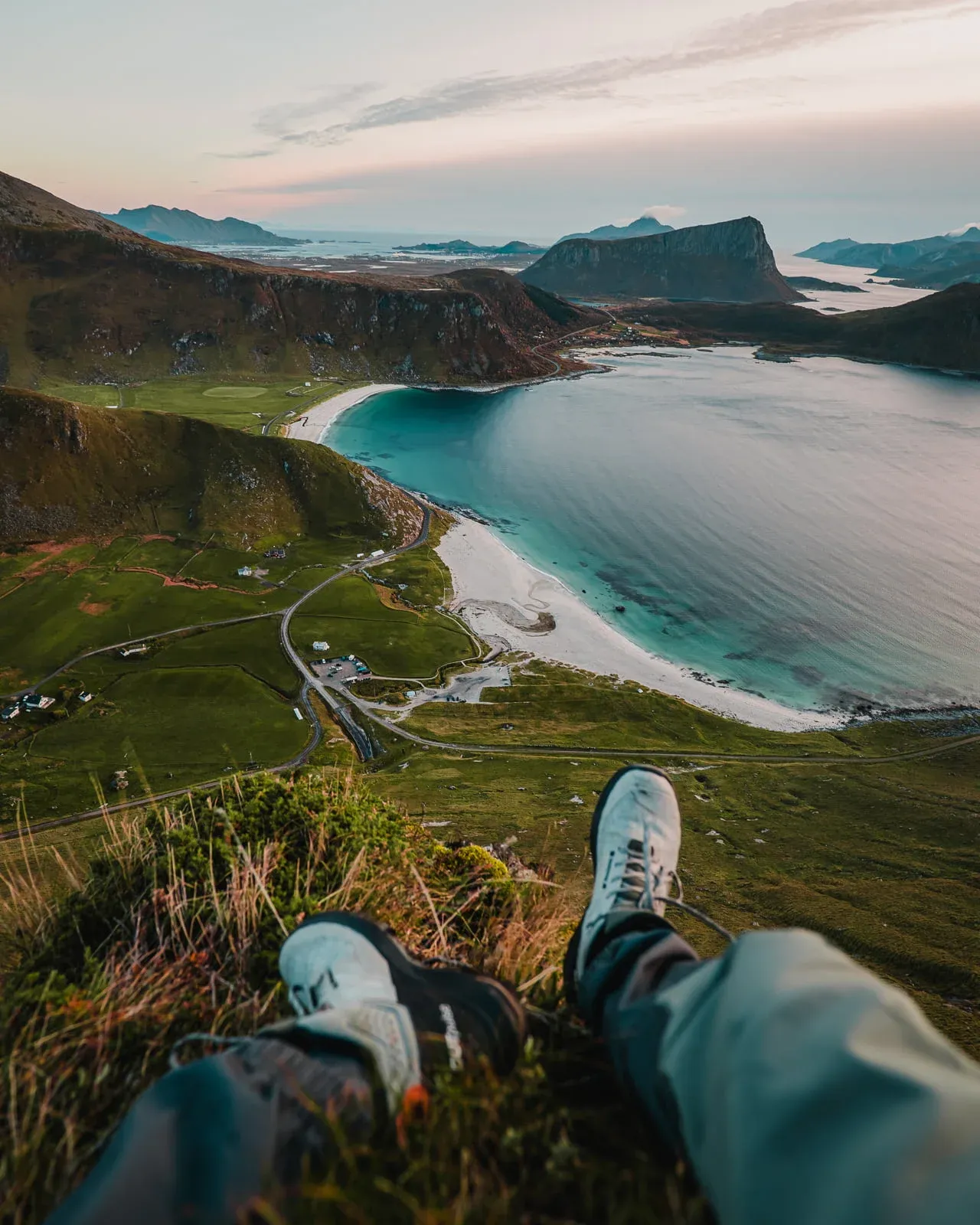
2. Northern Lights hunting
Both months offer great chances to see the aurora, with October giving longer, darker nights. You can go on your own or join a guided tour for expert tips and photo support!
3. Kayaking
Kayaking is one of the best activities in Lofoten, offering a peaceful yet adventurous way to explore the fjords and dramatic coastline. In September, the water is often calm enough to enjoy longer kayaking trips and by October it's more weather dependent. Guided kayaking tours are available in both months and they provide all the gear you need to stay warm on the water!
4. Surfing
Unstad Beach is world-famous for Arctic surfing and autumn swells make it one of the best times of year to catch waves. You’ll find surf schools offering lessons and gear.

5. Cultural experiences
September and October are often rainy and stormy, which is the perfect chance to explore some indoor attractions, such as Henningsvær’s art galleries, the Viking Museum at Borg or wander through fishing villages like Nusfjord and hide in cosy cafes.
6. Photography
Autumn is a dream for photography in Lofoten, with colourful landscapes, dramatic skies and the return of the Northern Lights. As photographers ourselves, this was one of our main reasons for visiting the Lofoten Islands! You can even join a photo tour with a local if you want a helping hand on finding photo spots.
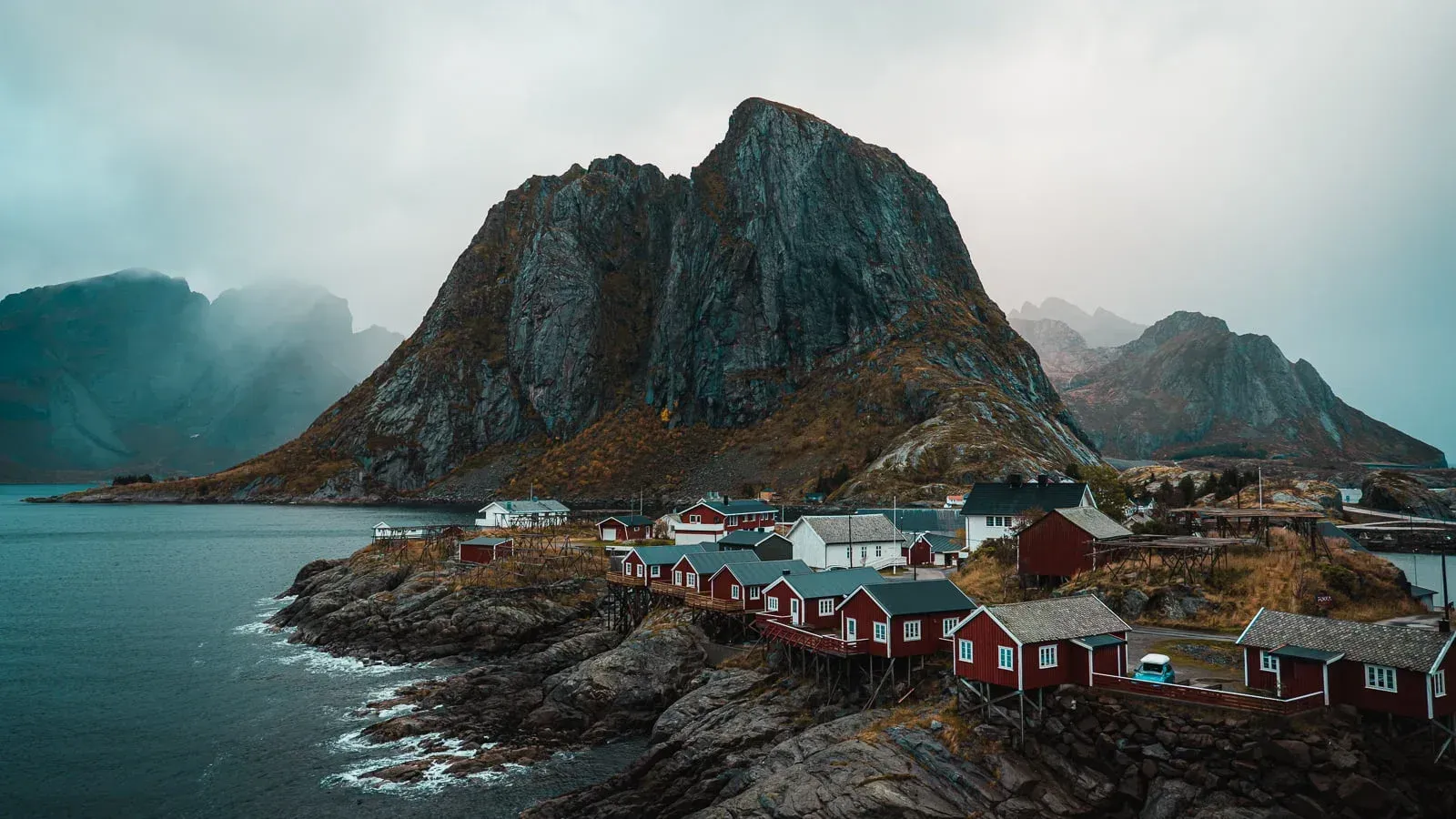
Top Rated Tours
Where to stay in Lofoten in autumn?
One of the best parts of visiting Lofoten in autumn is the cosy rorbu cabins, the traditional red fishermen’s huts you’ll see scattered along the coastline. Many of these have been renovated into modern rentals with fireplaces and sea views, making them the perfect place to relax during stormy evenings.

Beyond rorbu cabins, you’ll also find plenty of guesthouses, boutique hotels and campsites (though most campsites begin closing by October) throughout the islands.
We personally loved the small villages of Reine and Hamnøy, where the views were absolutely breathtaking, but some travellers prefer the more lively vibe of Henningsvær or Svolvær.

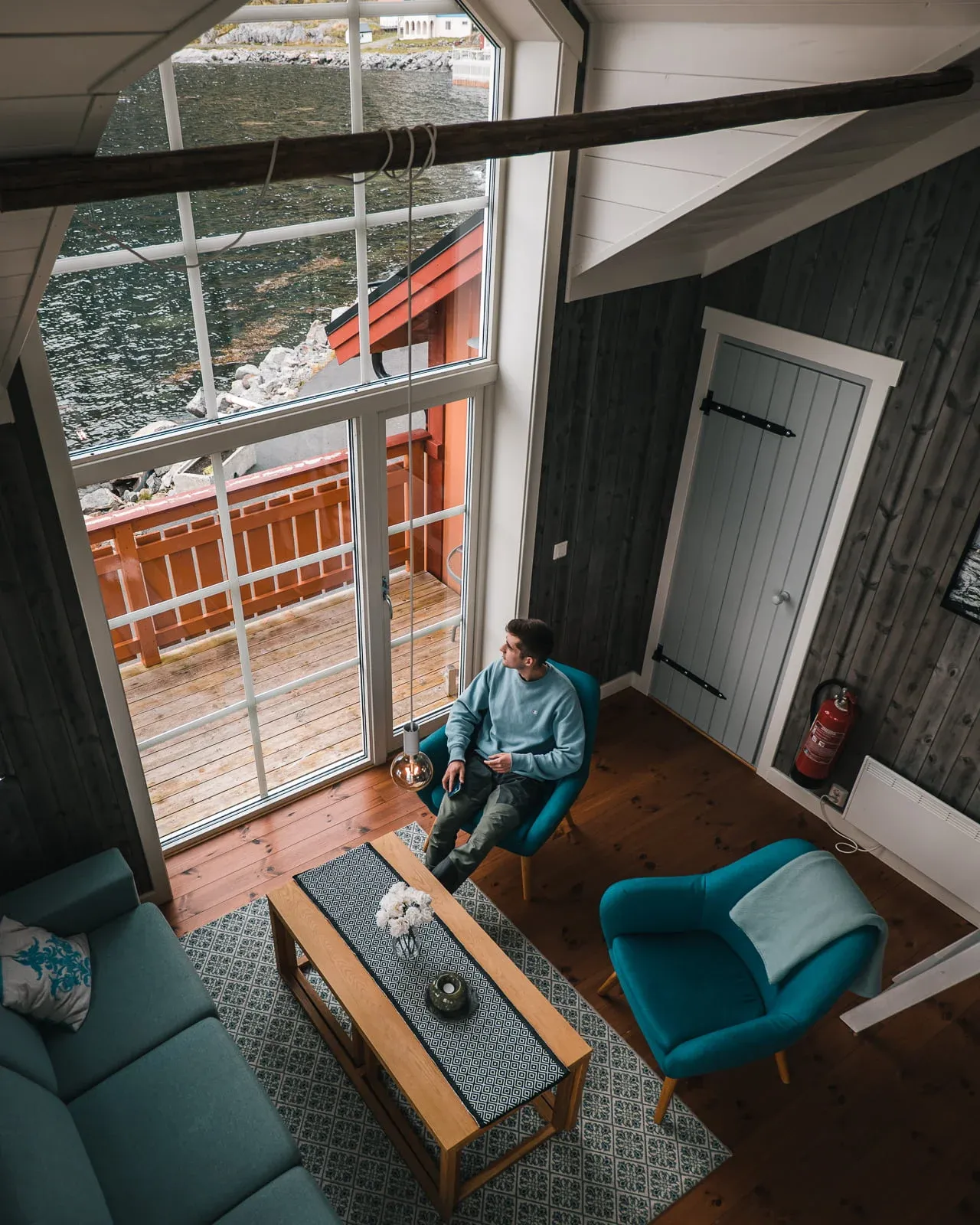
During our trip, we stayed in a cosy cabin at Reinefjorden Sjohus, which we would highly recommend.
If you’re not sure which area is right for you, I’ve put together a complete guide on where to stay in Lofoten, with recommendations for every area and budget.
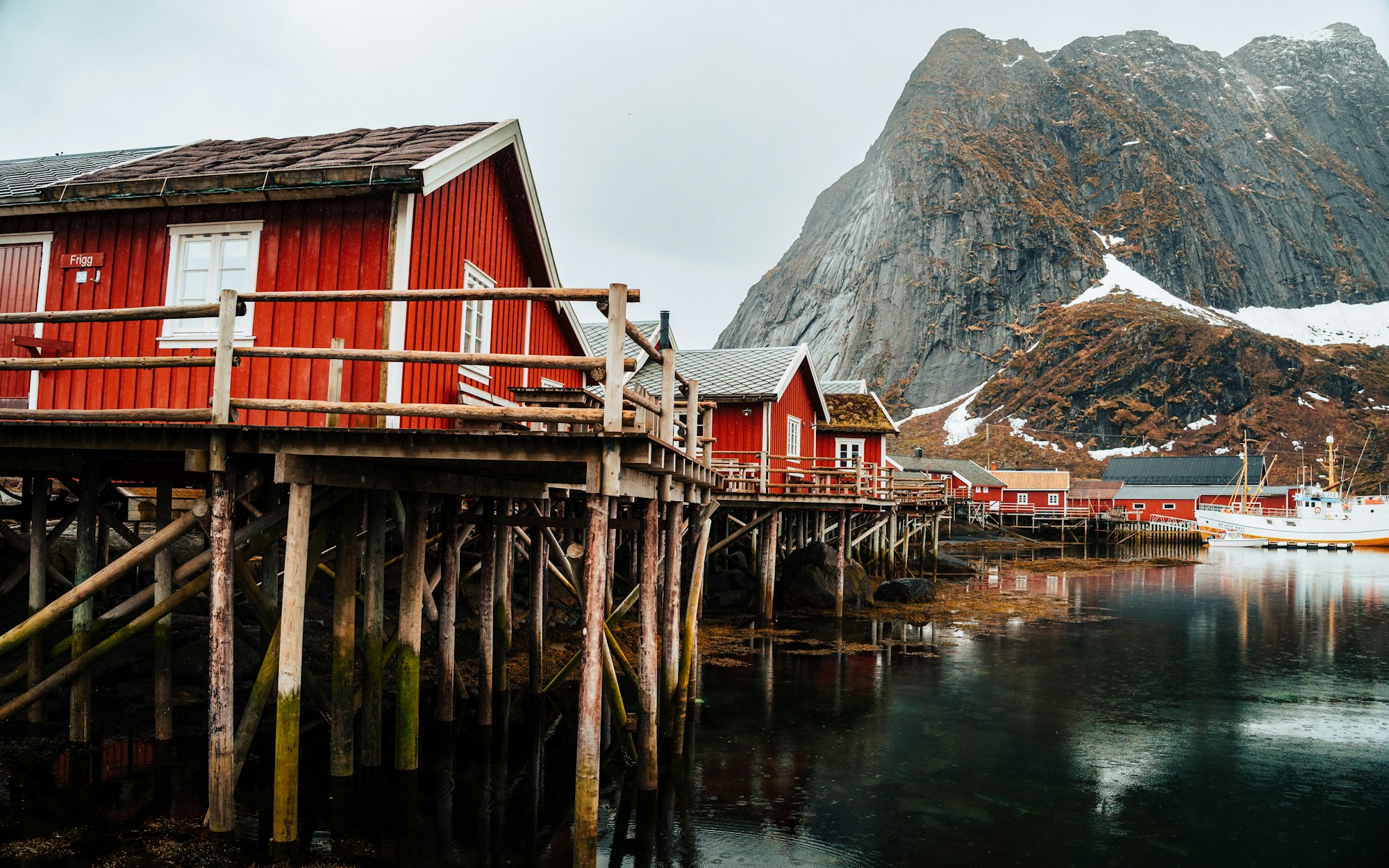
What should you pack for Lofoten in September and October?
As the weather can change dramatically from sunshine to storms in a matter of hours, you'll need to be prepared for all weather conditions.
The key is layering, so you'll need to bring a good waterproof and windproof jacket, along with warm mid-layers like fleece or wool. A thermal base layer is especially useful in October, when temperatures can dip close to freezing at night.
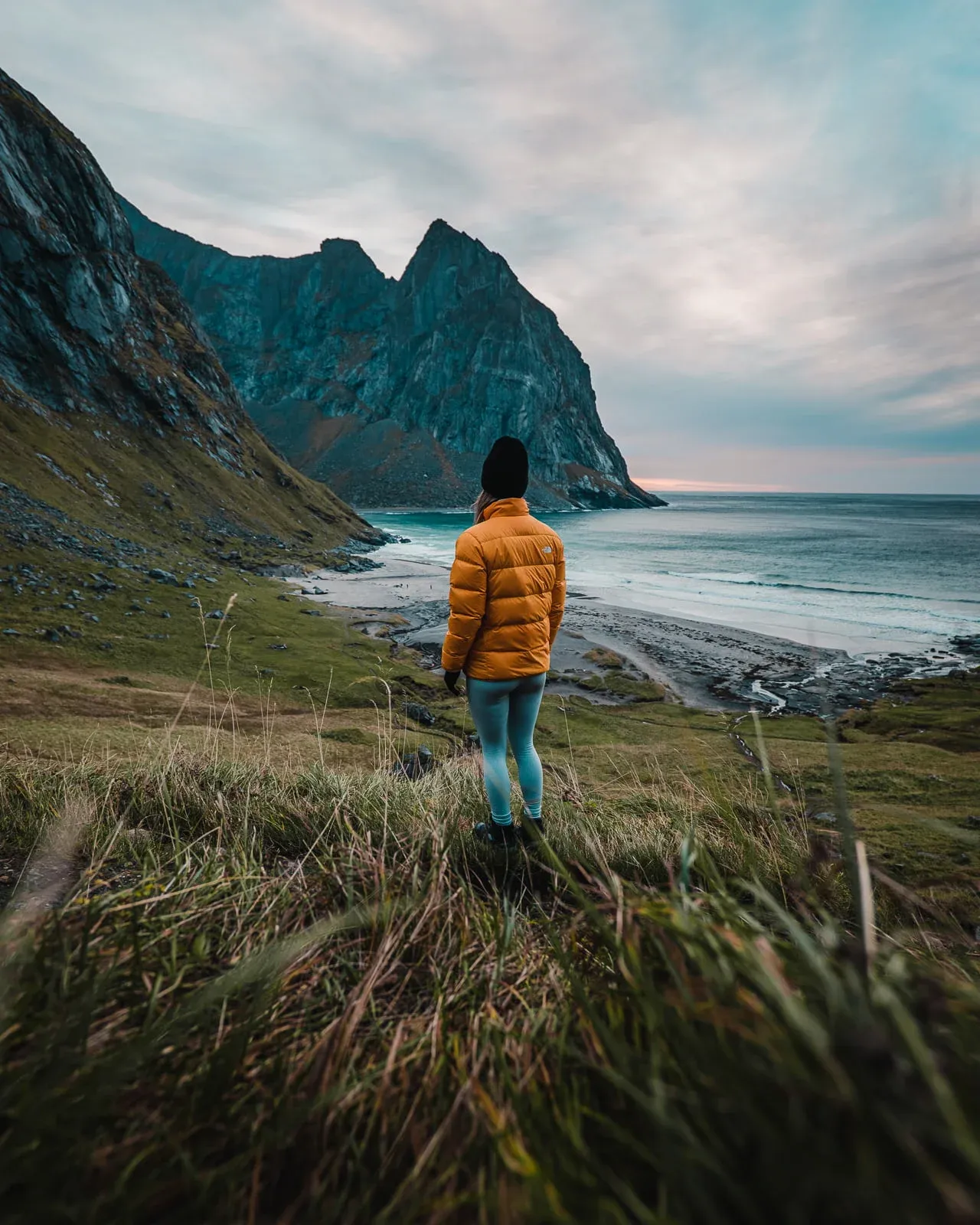
Sturdy, waterproof hiking boots are essential if you plan to spend time on the trails, as paths can be muddy and slippery after autumn rain. For evenings spent watching the Northern Lights, pack a hat, gloves and warm socks - even if the daytime feels mild, nights can get chilly.
Since you’ll likely spend time indoors on stormy days, it’s worth bringing comfortable clothes for relaxing in cabins. If you’re planning activities like kayaking or surfing, tour operators usually provide the necessary gear, but quick-dry clothing is still useful.
And don’t forget your camera gear, autumn light and aurora displays make Lofoten one of the most photogenic times of year!
Here's a quick overview of what to bring:
- Waterproof & windproof jacket
- Warm mid-layers (fleece or wool)
- Thermal base layers (especially for October nights)
- Waterproof hiking boots
- Warm hat, gloves and thick socks
- Comfortable indoor clothes (for cosy cabin evenings)
- Quick-dry clothing (for outdoor activities)
- Camera & tripod (for Northern Lights photography)
- Headlamp or torch (days shorten quickly in October)
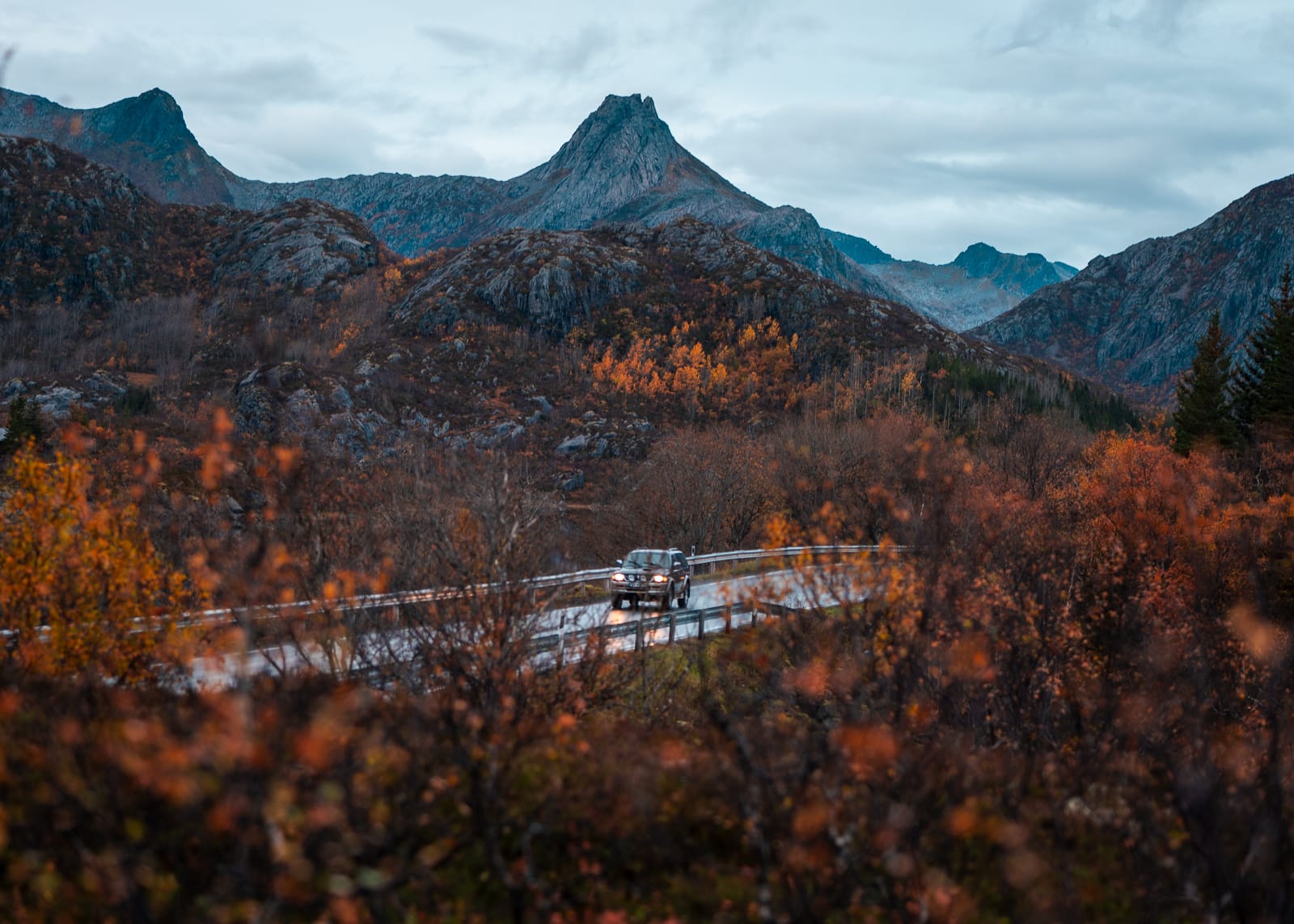
👋 We hope that you found this guide helpful! Before you go - don't forget to read our other Norway travel guides for more tips, suggestions & advice.


